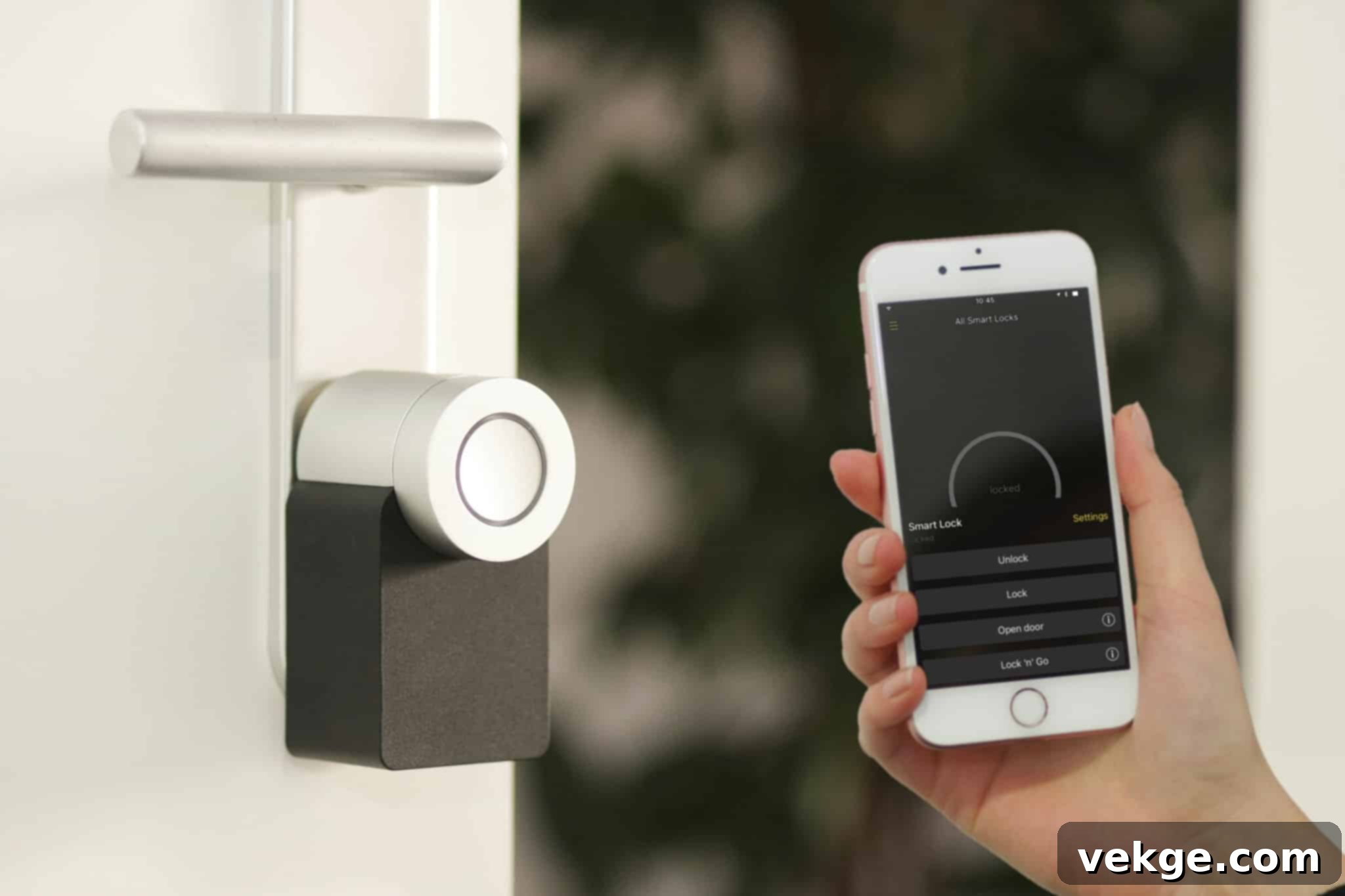The Ultimate Guide to Building Your Smart Home: A Step-by-Step Journey to Automation
Embarking on the journey to create a smart home is an exciting endeavor that promises to transform your living space into a hub of unparalleled convenience, efficiency, and enjoyment. From automating daily routines to enhancing security and entertainment, a well-planned smart home setup can significantly elevate your quality of life. This guide will walk you through the essential steps to build a cohesive and intelligent environment where your devices work seamlessly together.
As you delve into the world of home automation, integrating a VPN for your Smart TV is a crucial step that can profoundly enhance your experience. A Virtual Private Network (VPN) doesn’t just boost your online privacy and security by encrypting your internet connection; it also unlocks a world of content by bypassing geo-restrictions. This means you can access your favorite shows, movies, and streaming services from anywhere, ensuring your smart entertainment system is not only smart in its operation but also boundless in the content it delivers. With a VPN, your smart home extends beyond its physical walls, connecting you securely and freely to global digital content.
This extended guide aims to ensure a smooth and enjoyable transition into advanced home automation. We’ll cover everything from understanding device compatibility and choosing the right central hub to implementing smart lighting, security, and innovative appliances, all while keeping your digital life secure and your home incredibly efficient.
Understand Device Compatibility and Standards
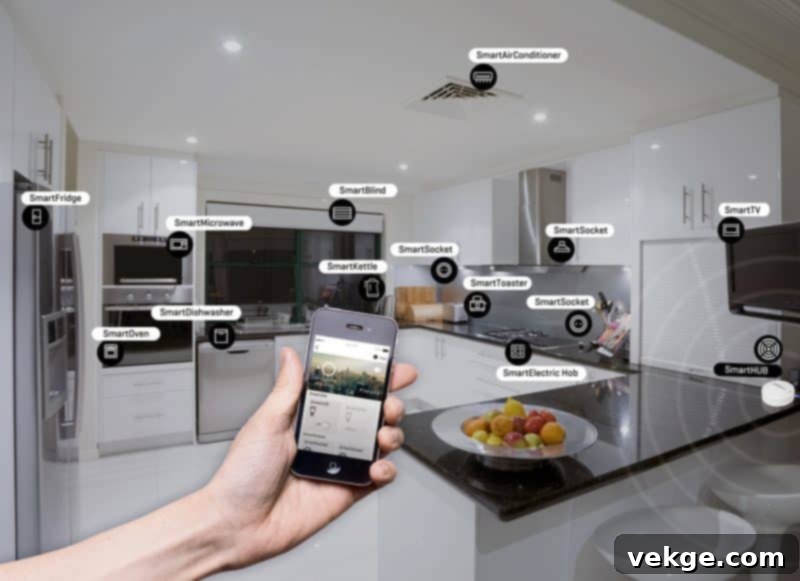
Before investing in any smart home devices, it’s paramount to ensure they can communicate effectively with each other. The smart home market has historically been fragmented, with various manufacturers using different communication protocols, leading to compatibility headaches. However, the introduction of the Matter standard has revolutionized this landscape.
Matter is an open-source connectivity standard designed to unify the smart home ecosystem, allowing devices from different brands and platforms (like Apple HomeKit, Google Home, Amazon Alexa, and Samsung SmartThings) to work together seamlessly. As you select devices, prioritize those explicitly stating Matter support. This forward-thinking approach guarantees a cohesive and interoperable system where all your devices can be easily controlled through a unified interface, regardless of their brand. Focusing on Matter-compatible devices will future-proof your smart home setup, simplifying management and enhancing your overall smart home experience by eliminating the frustration of incompatible gadgets.
Choose Your Central Voice Assistant Hub

The voice assistant hub serves as the brain of your smart home, acting as the central command center that allows you to control all your connected devices with simple voice commands. The three major players in this space are Google Assistant (found in Google Nest devices), Amazon Alexa (in Amazon Echo devices), and Apple Siri (integrated with Apple HomeKit). Choosing a hub that aligns with your preferred ecosystem is crucial for a streamlined and intuitive smart home operation.
These hubs do more than just control smart devices; they can also assist with daily tasks, answer questions, play music, provide news updates, and even entertain. For example, a Google Nest Hub or Nest Audio in your living room can serve as a central control point, offering visual feedback and rich audio. Similarly, Amazon Echo Show devices provide a visual element to interactions, displaying weather, calendars, or even video streams from smart cameras. Consider your daily routines, existing devices, and personal preferences when selecting a hub. Think about which ecosystem you are already invested in or find most intuitive to ensure a harmonious and user-friendly smart home experience.
Integrate Smart Lighting for Ambiance and Efficiency
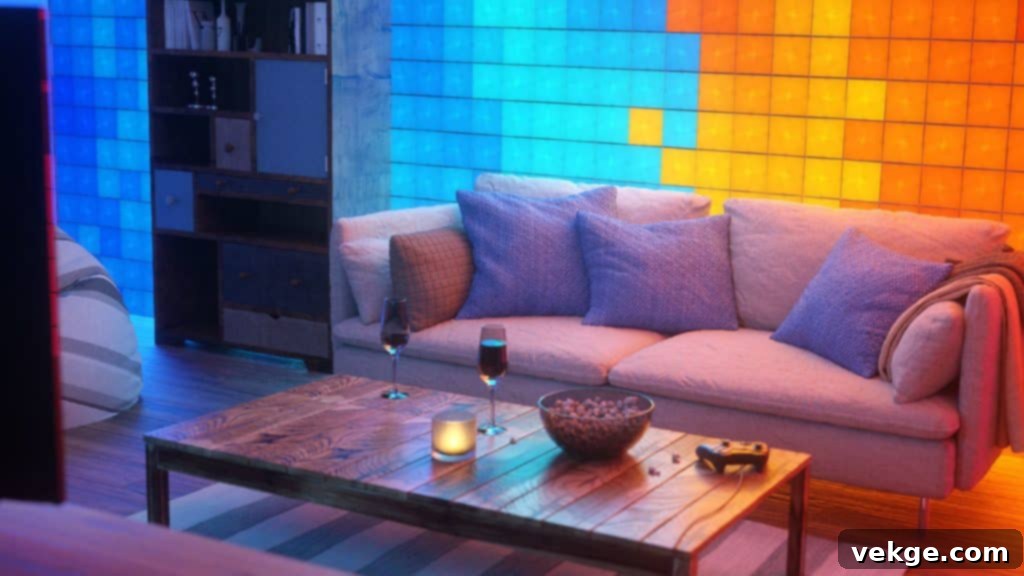
Smart lighting is often one of the first and most impactful steps into home automation, and for good reason. It offers far more than just the convenience of turning lights on or off without leaving the couch. Smart lighting systems allow you to fine-tune the ambiance of any room with adjustable brightness and an endless spectrum of colors, set schedules, and even integrate with motion sensors or geofencing to activate lights when you enter or leave a room.
Beyond creating the perfect mood for any occasion, smart lighting contributes significantly to energy savings by allowing precise control and scheduling. Many systems can also simulate your presence when you’re away from home, enhancing security and deterring potential intruders. Start with a few smart bulbs in high-traffic areas like the living room, kitchen, and bedroom, and gradually expand. Popular brands like Philips Hue, Govee, and LIFX offer a wide range of products, including bulbs, light strips, and fixtures, all controllable via apps or voice commands, making them a foundational element of any modern smart home.
Integrate Smart Plugs: The Gateway to Automation

Smart plugs are perhaps the most underestimated heroes of smart homes, providing a simple, cost-effective, and incredibly versatile way to bring intelligence to your non-smart appliances. These compact devices plug into standard wall outlets, turning any traditional appliance—like lamps, fans, coffee makers, or even holiday lights—into a smart device that can be controlled remotely via an app or voice commands.
Imagine waking up to the aroma of freshly brewed coffee because your coffee maker automatically turned on just before your alarm. Or having a floor lamp dim automatically as evening approaches, creating a cozy atmosphere. Smart plugs excel at scheduling, allowing you to set specific times for devices to power on or off, and many even offer energy monitoring features, helping you identify and reduce vampire power draw from electronics. They are an excellent entry point into home automation, offering a tangible taste of the convenience and control that a fully integrated smart home provides without requiring extensive hardware upgrades.
Upgrade to a Smart Thermostat for Optimal Comfort and Savings

A smart thermostat is far more sophisticated than a traditional programmable thermostat; it’s a personalized climate control system designed to optimize your home’s environment while significantly reducing energy consumption. Devices like the Nest Learning Thermostat and Ecobee SmartThermostat with Voice Control learn your habits and preferences, automatically adjusting the temperature based on your daily schedule, presence detection, and even local weather conditions.
The ability to control your home’s climate from anywhere using your smartphone is not just a luxury but a practical way to manage your living space efficiently. Heading home early? Adjust the temperature before you arrive. Forgot to turn off the AC? Do it remotely. Many smart thermostats also integrate with other smart home devices, allowing for automated actions like adjusting the temperature when a smart lock is armed in “away” mode. This level of intelligent control ensures optimal comfort while contributing to substantial savings on your energy bills and a smaller environmental footprint.
Implement Robust Smart Home Security
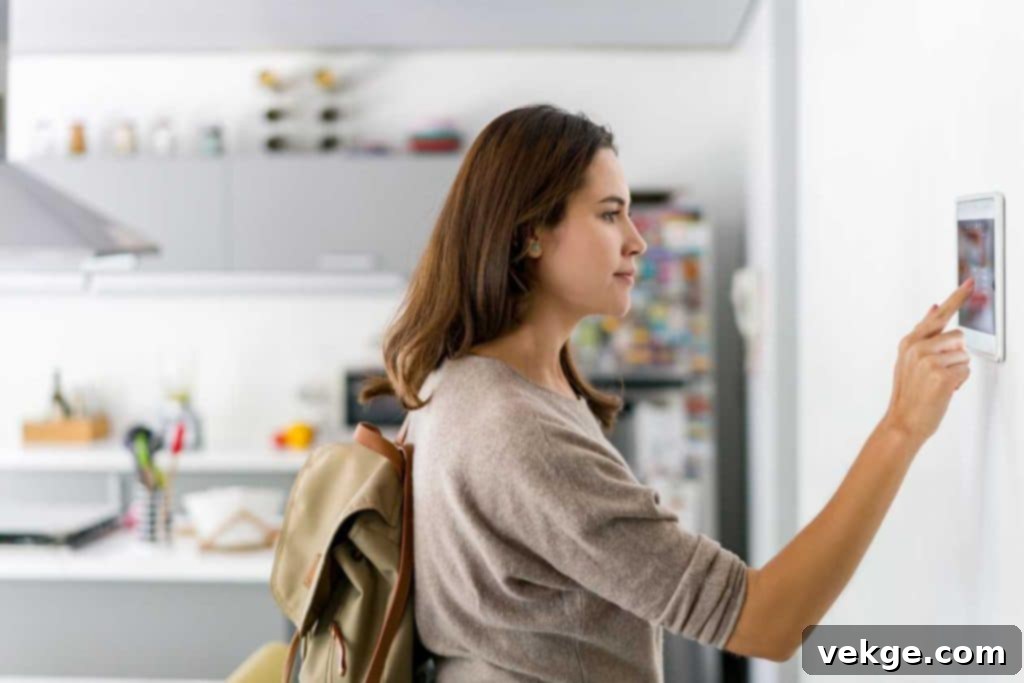
Elevating your home’s security with smart devices offers unparalleled peace of mind and enhanced protection. Modern smart security systems are modular and highly customizable, allowing you to build a comprehensive defense tailored to your needs. Video doorbells, such as the Google Nest Doorbell or Ring Video Doorbell, enable you to see, hear, and speak to visitors from anywhere, providing a crucial first line of defense.
Smart locks replace traditional deadbolts, allowing for keyless entry via passcodes, smartphone apps, or even fingerprint recognition. They also enable you to grant temporary access to guests or service providers remotely. Adding smart security cameras strategically around your property, both indoors and outdoors, can deter potential intruders, offer continuous monitoring, and alert you to any unusual activity through motion detection and facial recognition features. Beyond these, consider integrating motion sensors, window/door contact sensors, and smart smoke/CO detectors for a holistic security approach. Each component works together, often integrating with your voice assistant hub, to create a safer, more responsive, and more secure environment for you and your loved ones.
Explore Innovative Smart Appliances for Ultimate Convenience

As your confidence in your smart home ecosystem grows, exploring innovative appliances can unlock new levels of convenience, efficiency, and enjoyment. The market for smart appliances is continually expanding, offering intelligent solutions for almost every aspect of home management. Beyond the basics, you can find smart refrigerators that track inventory and suggest recipes, smart washing machines that optimize cycles and notify you when laundry is done, and robot vacuums that map your home and clean on schedule.
Consider smart grills that use precision temperature control and probes to ensure perfectly cooked meals every time, or smart blinds that automatically adjust to natural light patterns, enhancing comfort, privacy, and energy efficiency throughout the day. Even smart air purifiers can monitor air quality and activate only when needed. These advanced devices not only streamline everyday tasks and reduce manual effort but also add an element of luxury and sophistication, allowing you to spend less time on chores and more time enjoying your perfectly automated home.
Setting Routines and Continuously Expanding Your Smart Home
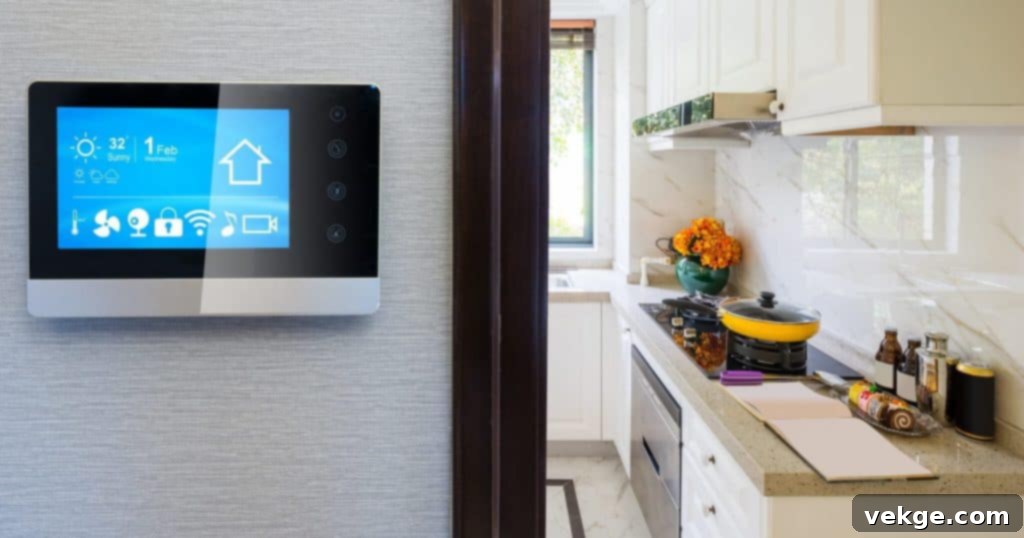
The true power and magic of a smart home lie in its ability to automate and simplify your daily routines through custom scenes and automations. This is where your individual devices come together to create a harmonious and responsive living environment. Whether it’s waking up to a warm house with your favorite music playing and the blinds opening automatically, ensuring your home is securely locked and all lights are off when you leave for work, or creating the perfect “movie night” ambiance with dimmed lights and the TV turning on—the possibilities for personalization are truly endless.
Start with simple routines that address everyday needs, and gradually explore more complex automations as you become more comfortable and familiar with your system’s capabilities. Your smart home is a dynamic entity; it’s a journey of continuous discovery, personalization, and adaptation to your evolving lifestyle. The beauty lies in its flexibility to grow with you, continuously adding new devices and refining routines to enhance your convenience, efficiency, and peace of mind.
Creating a smart home is an enriching journey that allows you to transform your living space into a reflection of your lifestyle and preferences. By carefully selecting compatible devices, starting with foundational elements like smart lighting and thermostats, and gradually incorporating advanced security features and innovative appliances, you can build an environment that truly works for you.
Embrace the possibilities of interconnected technology and enjoy the unparalleled convenience, energy efficiency, and enhanced security that a thoughtfully designed smart home offers. With each new device and every custom routine, you’re not just upgrading your home; you’re upgrading your way of life.
